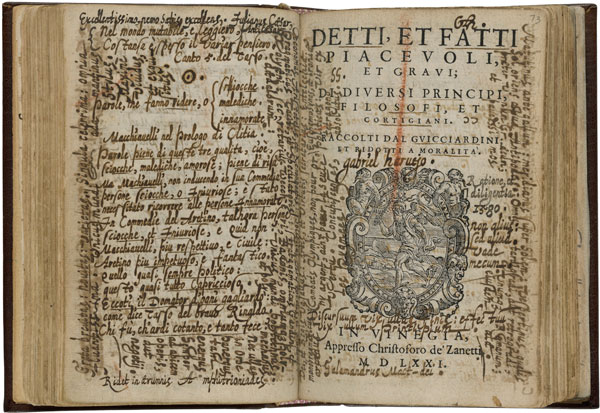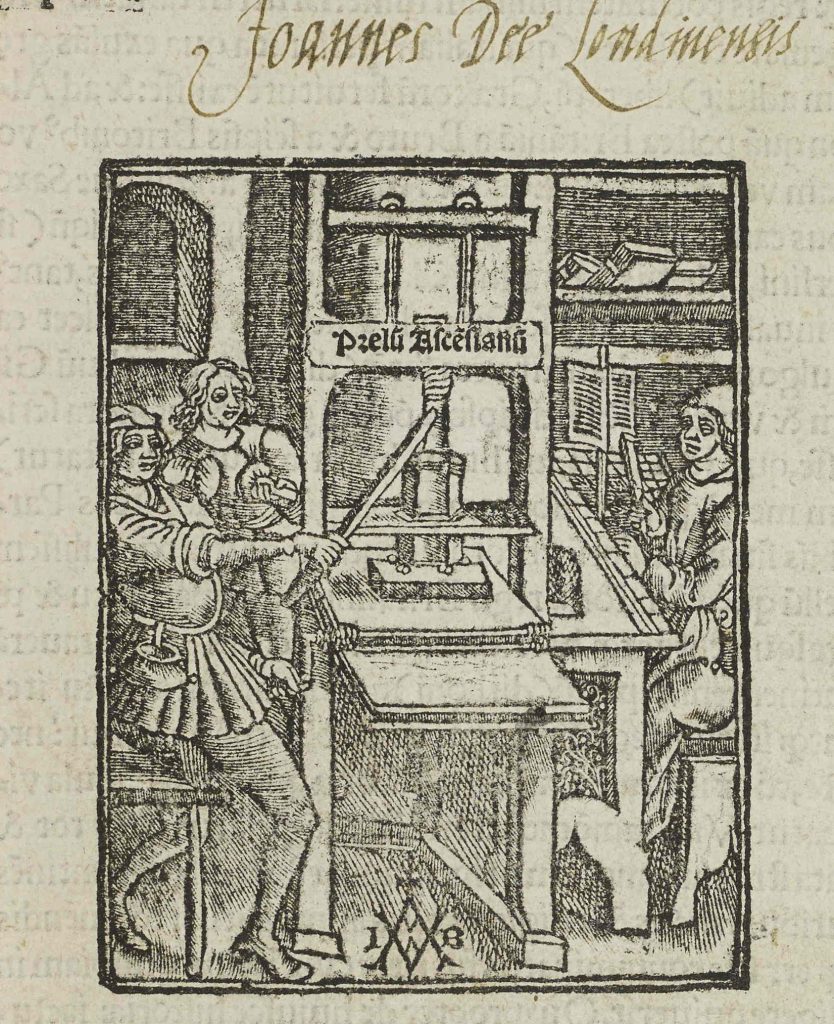Teaching with AOR
The Archaeology of Reading was created to advance and broaden the ways in which scholars study early modern reading practices. On a wider level, however, the transcriptions, translations, and images in the AOR environment provide ample opportunity for teachers as well as scholars to explore the richness of early modern book culture and to engage with the core question of the project: what, exactly, did educated men and women in the Renaissance do with their books?

The history of reading is now in its early adulthood, but some of the central questions of the discipline are precisely those that AOR seeks to clarify. What exactly are these marks that we refer to as marginalia? What do they mean, and what do they have to do with the intake of information that we understand as reading? As the study of the circulation and reception of information becomes more widespread, we know that marginalia are both byproducts of knowledge perception and creation, and evidence of the larger processes that were practiced and learned in common by the thinkers of the Middle Ages and Renaissance. We are less looking over the shoulders of individual readers (or into their heads) than we are eavesdropping on fragmentary conversations between readers, their friends, and their books. In early modern Europe, that conversation could span continents, centuries, and generations, as books were circulated among friends and passed down to students and family members. We are excited by the possibility to continue those conversations around the digital forms of these books.
Getting Started
In addition to the exercises below, we’ve recently collaborated with the Bibliographical Society of America to record a webinar on the use of AOR for teaching and research. In it, we walk new users through the steps of the viewer, running searches, and turning those materials into assignments, discussion topics, and research questions. Our notes from the presentations, along with a subject guide to the books in the AOR corpus, are available on our Downloads page, and should help users who are coming to the resource for the first time.
The following exercises may incorporated into syllabi and course plans, or pursued independently or collectively by users of the AOR viewer. Some will make use of the translations and commentary to allow for a class to read, discuss and experiment with books and concepts that would otherwise be inaccessible to them. In fact, it may be said that when these exercises are used in connection with class discussion, they are not dissimilar to the marginal notations they take as their subjects. Many of the notes in these books were produced by communal, collaborative scholarly practices, and could generate new knowledge in addition to documenting or rehearsing the information that already was known. We hope that you and your students find this look into the wide world of early modern culture useful.
Exercises for College and University Seminars

The following exercises are designed to support graduate or advanced undergraduate courses in the history of the book, the history of reading, and the intellectual culture of the Renaissance. Each contains suggested readings, discussion questions, and a methodology that can be done individually or in groups during a class session. Each of the three exercises contains an aspect that is open-ended, and that takes advantage of the ability of the AOR viewer to export research findings, so that students can take the opportunity to record their own discoveries and notes and share them with the class, either by sharing links or by projection. To learn more about the modules or to design your own, please contact us.
Exercises for Secondary Schools

Since our hope for the project is to aid in education at all levels, we have also put together a series of shorter exercises for use by secondary school classes either in class or at home. The transcriptions and translations in the AOR project afford students the opportunity to engage in primary-source analysis on a key group of early modern materials that would otherwise be inaccessible to them. The exercises below aim to connect the information (printed and handwritten) in these books to the significant historical, intellectual, and cultural developments of the age and support the thematic learning objectives of the AP curriculum for European history (The current guidelines are available here). However, the exercises could be used for a range of other course work. If you have questions about a particular topic or would like to share one with us, please contact us.
Remaining Questions
These exercises are drawn from the pieces of notes, queries, and topics that left us collectively scratching our heads during the processes of transcription and translation. In the study of any individual or period, we are constantly reminded that what remains to us in written form is often only a small part of the context necessary to understand it. The phrase “I think I know what it says, but I have no clue what it means” has been common enough to us over the phases of transcription. But these seeming dead ends are one such way into a broader investigation of what habits of mind or particular reading practices were taken for granted by early modern annotators and are now invisible to us, and an invitation not to ignore them. In this way, fragmentary, mundane, or cryptic marginalia in books can be approached less as arcane minutiae to pursue individually than as opportunities to team up and fill in a puzzle left to us all.
Think you’ve solved one? Contact us to have your answer posted.
1. Is there a Mathematician in the House?
On the flyleaves of his copy of Euclid, John Dee writes this lengthy passage on numbers in continual proportion. However, the sense of the passage remains unclear to us mostly because of the abbreviations used. We’re pretty sure that the abbreviation that usually denotes “rum” here stands for radix, but without a better working knowledge of the theory here we’re at a loss for the variations that accompany it in this passage.
As a further help, a digitized copy of the 1570 English translation of Euclid, which Dee would later be involved with, is available here via the Library of Congress.
2. Livy and Cicero and Sallust and Augustine?
In the frontmatter of his Livy, Harvey comments that he has compared the city of men with Augustine’s City of God, noting “The comparison was wonderfully successful and the contrast, both political and theological, very helpful. It was certainly an enviable parallel.” This advanced search in the AOR viewer contains many of the references to the City of God that exist on the first thirty pages of the Livy. What do you think that Harvey found “enviable” in the comparison?
3. An Uncertain Sign
John Dee’s copy of the commentary on Pliny the Elder contains two interpolations on the theme of Litteromancy, which Dee claims to have found in an old book. An inserted slip in the back preserves a version of this text in an older hand, along with the text of an exorcism. The third line of the hand isn’t legible to us, is it to you?

